The 1930s — An overview of special effects
For the ones who are not “initiates“ it would be interested to know general purpose about special effects during the 30s.
The period of the 30s known actually a greatest technical development with the coming of sound — the “talkie“ — and in the mid-1930s, the big studios were producing all their major film in sound.
With films being made exclusively on studio lots, effects technicians had to find ways to bring any location to the set. The technology that was developed enabled the first practical use of rear projection, a process enabling background scenery to be projected on to a screen behind actors while filming in the studio. Over the next twenty years the technique would be perfected for use in almost every Hollywood production, providing backdrops for ocean-going romance, tropical adventures and journeys in cars !
 For The Invisible Man (1933), the FX team used mechanical systems and wires to make doors open, chairs move and items float around as if the unseen hero of the film was actually interacting with them. In the above scene, the presence of the invisible man indicated by the appearance of his footprints in fresh snow is achieved thanks to a floor with foot-shaped holes in it which are opened sequentially during the filming causing the effect of snow compressed by invisible feet.
For The Invisible Man (1933), the FX team used mechanical systems and wires to make doors open, chairs move and items float around as if the unseen hero of the film was actually interacting with them. In the above scene, the presence of the invisible man indicated by the appearance of his footprints in fresh snow is achieved thanks to a floor with foot-shaped holes in it which are opened sequentially during the filming causing the effect of snow compressed by invisible feet.
 Technicians stage an indoor sea battle for Jack Ahoy (1934).
Technicians stage an indoor sea battle for Jack Ahoy (1934).
By the middle of the decade, special effects had advanced so much that a single department under the name of “special effects“ was not enough, and each studio’s effects department had several subdivisions : special effects departments were responsible for rear projection, miniatures, physical and mechanical effects, optical departments were responsible for matte paintings and optical printing,… Special effects became an integral aspect of movie making during the decade. There were good investments in technology and leeway for innovation. For example, in 1932 the construction of Universal’s first dedicated special effects stage was ordered ; and 1939 marked the first year of the creation of the Best Achievement in Special Effects Academy Award.
The impressive twister scene in The Wizard of Oz (1939), the tornado was made using a huge funnel-shaped bag coiling by a blowing fan and emitting a cloud of dust.

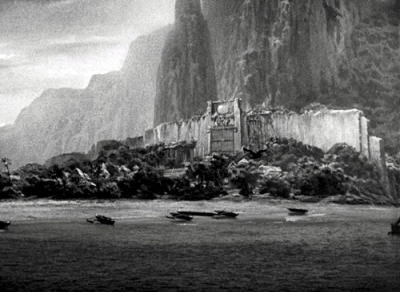
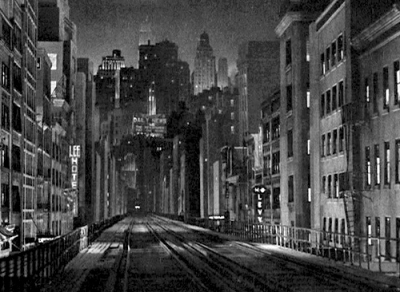 Matte paintings were used to portray many locations including the established shots of Skull Island and the New York skyline.
Matte paintings were used to portray many locations including the established shots of Skull Island and the New York skyline.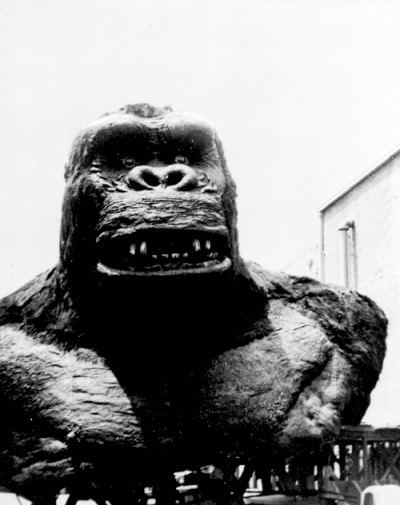
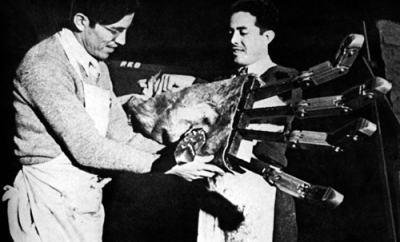 The mighty Kong was portrayed by a 46 cm puppet made of an assemblage of metal, rubber and fur. For Kong, Delgado even stretched rubber tendons between joints to give the ape a realistic sinewy appearance. A full-size bust, arm and leg were built for close-ups. Stop-motion was used for animating the Kong puppet, just as the Skull Island dinosaurs, and the attacking aircraft sequences.
The mighty Kong was portrayed by a 46 cm puppet made of an assemblage of metal, rubber and fur. For Kong, Delgado even stretched rubber tendons between joints to give the ape a realistic sinewy appearance. A full-size bust, arm and leg were built for close-ups. Stop-motion was used for animating the Kong puppet, just as the Skull Island dinosaurs, and the attacking aircraft sequences.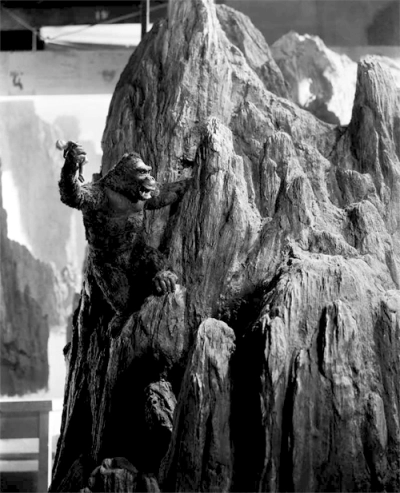 A nice behind the scenes photo revealing the detail of the model miniatures and the size of the matte painting backings.
A nice behind the scenes photo revealing the detail of the model miniatures and the size of the matte painting backings.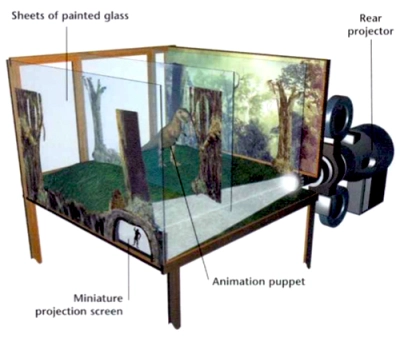 Miniature rear projection process.
Miniature rear projection process.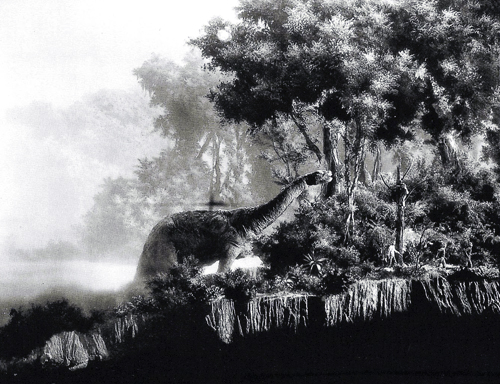 A model dinosaur through O’Brien’s atmospheric forest settings. The bottom of the image has been matted out to receive a live-action element.
A model dinosaur through O’Brien’s atmospheric forest settings. The bottom of the image has been matted out to receive a live-action element.